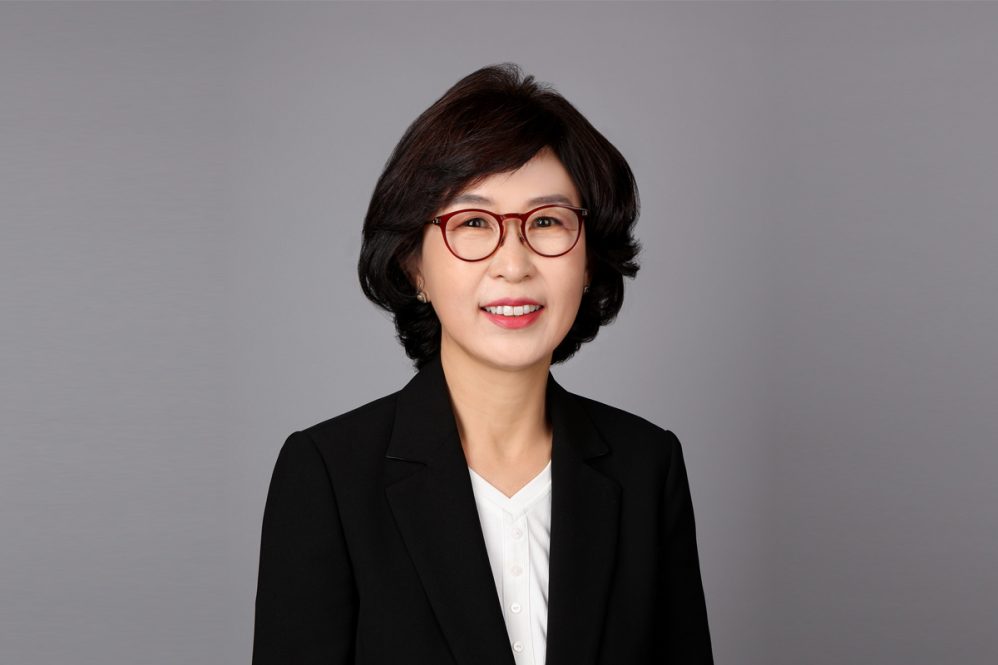Foods tend to gain reputations as healthy or unhealthy. But what exactly makes a food good for us?
Yangha Kim’s ’94 research investigates what’s happening on a cellular level when we eat certain foods to determine the precise health benefits of different plant compounds.
Kim is a professor in the Department of Nutritional Science and Food Management at Ewha Womans University, Seoul. While in the College of Agriculture, Health and Natural Resources, Kim was a PhD student in the Department of Nutritional Sciences.
Kim’s passion for learning began as a child. Both her parents were authors, and Kim grew up in a house overflowing with books. She says she almost majored in literature as an undergraduate at Ewha Womans University but chose to pursue her interest in the sciences instead.
“You need to do a lot of thinking and creative envisioning in order to plan new experiments,” Kim says. “It actually helped quite a lot that I read so much and always had an active imagination as a child.”
One sector of Kim’s research focuses on obesity. In the 1980s, when Kim was a student in South Korea, the general scientific consensus was that liver tissue was the center of all metabolic action in the body. While the liver does play a crucial role in metabolizing fats, carbohydrates, and proteins into usable nutrients for the body, at UConn Kim learned there’s more to the story.
“During my research at UConn, I learned about the serious effects of obesity on health and the important role of the adipose tissue in metabolism and became interested in researching this further,” Kim says.
Adipose tissue is made up of fat cells. This type of tissue stores energy in the form of lipids that the body can call upon later. It also serves a vital function as an organ that produces bioactive factors that communicate with other organs to modulate a range of metabolic pathways.
The role of adipose tissue in obesity has become a focus for many obesity researchers, including Kim.
Kim says that, while at CAHNR, her advisor, Professor Emeritus Headley Freake made sure she was able to balance research and raising her daughter, who was three years old when Kim joined the program. Even if this meant moving morning meetings to a lunchtime sit down so Kim could drop her daughter off at daycare.
“I was so grateful for my experience at CAHNR, where people understood and helped me,” Kim says. “These experiences influenced and shaped my own experience as a professor and advisor.”
Kim is currently working on discovering how different plant-derived compounds, such as those found in coffee, yerba mate, mushrooms, and blue corn, can help health conditions such as obesity-related inflammation.
“A lot of Korean cuisine includes plants,” Kim says. “I myself mainly cook vegetable-based dishes for my family, so I think my research interests formed and developed naturally.”
Kim has been slowly uncovering the health benefits of specific foods. For example, how chrysanthemum flower extract can help with obesity-induced inflammation and muscle mitochondria changes, or how mulberry fruit juice powder can fight obesity-induced inflammation by suppressing the generation of adipose tissue cells and inflammation.
Every moment, the human body is working hard to communicate with its disparate parts and keeps itself going using a complex but well-oiled system. But when the body is stressed, by a condition like obesity, homeostasis is thrown out of whack, and it becomes susceptible to a host of diseases like diabetes or heart disease.
Kim’s research program focuses on how to help people return or keep their bodies in homeostatic conditions.
“Nutrition is an academic area where we study how to live healthy lives through homeostasis maintenance,” Kim says. “While it has been difficult at times in the past 40 years to discover small, yet important effects of foods on the body’s network system, it is extremely rewarding to me that I have constantly put in efforts to find a solution.”
While much of her work is a gradual progression toward understanding how to best fuel our bodies to maintain homeostasis, Kim feels she is making meaningful strides all the time.
Despite the pace of research, Kim’s work is making an impact for patients and her peers. She was recently elected president the Korean Nutrition Society, an organization focused on improving public health and nutrition through scientific discovery.
“Often, research results are not clearly defined or evident,” Kim says. “This is because our bodies and their physiological networks are very, very complex. I believe, though, that as these results build on each other with time, they will be clearer, and we will learn more. I hope these results will be helpful for many people in the future.”



